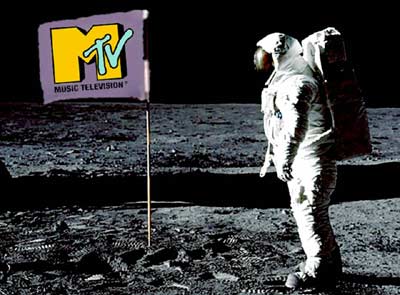
On the screen appeared the Columbia space shuttle. The countdown began. Exactly one minute after midnight the words “Ladies and gentlemen, rock and roll,” and the neon logo of MTV appeared before thousands of viewers in the United States. On Saturday, Aug. 1, 1981, MTV made its debut.
“You’ll never look at music the same way again” was the station’s first slogan. Equally prophetic was the title of the first song played on air. The Buggles’ hit “Video Killed the Radio Star” rang in the new age of music entertainment. In 30 years, the viewer base grew from 2 million subscribers to over 100 [million]. Today, MTV has 64 transmitters on several continents. Even if most of their current programming has nothing to do with music, the 30th anniversary of this revolutionary organization is a great opportunity for retrospection.
The founder of the station, businessman Robert W. Pittman, was not the first person who wanted to show music videos on TV screens. Up until that time, music videos were crammed into entertainment shows, and were not guaranteed to be shown at all. Shows dedicated to broadcasting music videos were almost nonexistent. They would get 25 minutes per week, and that was all.
Pittman did not invent anything original, but he succeeded because he managed to successfully craft a 24-hour broadcasting concept for music videos, and he was a champion of marketing. From the excellent logo, designed by young and ambitious artists, to the good choices for VJ’s (video jockeys), the creator of MTV had one success after another.
The genesis of MTV was a romantic time but was filled with difficulty. Even though the signal was broadcast in the stereo system, new at the time, it reached only a fraction of TV viewers. The residents of large metropolises, such as New York and Los Angeles, couldn’t get the signal, which caused worry for the leadership. It was then that they organized the commercial campaign, highlighted by the famous slogan “I want my MTV!” Stars such as Mick Jagger, Stevie Nicks and Pete Townshend starred in these famous spots, urging viewers to call their cable company. The effect? In 1982, MTV debuted in Manhattan.
With the birth of MTV came many controversies. The unwritten rule of not playing the songs of black artists comes to mind. Only when Michael Jackson’s “Thriller” came out were other black artists given the chance. The musical establishment did not unanimously welcome the birth of the new station. The Dead Kennedys even recorded a song named “M.T.V. — Get Off the Air,” which aggressively explained the reasons why they didn’t want the channel to exist. Some prominent figures in the music industry did not realize the positive role of music videos for many years.
Despite these setbacks, MTV became more popular from day to day. While the American catalog of music videos was relatively small, MTV relied on British pop and alternative music. Fresh and interesting videos by bands such as Human League or Duran Duran helped the British bands break into the Billboard charts, even though they were not played by American radio stations. MTV had achieved its purpose: It influenced the direction of music itself. The first couple of years were characterized by an outpouring in creativity. Among those who helped the movement was our own Zbigniew Rybczynski. He won two MTV astronaut statues at the second MTV Music Awards in 1985 for his work directing the video “Close to the Edit” by Art of Noise. The music video, seen today as an avant-garde art form, was a huge hit in those days.

Leave a Reply
You must be logged in to post a comment.